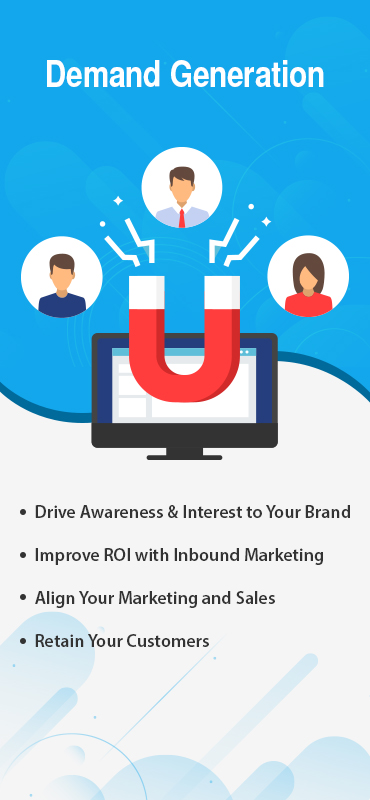There was a time when customized demonstrations and golf outings swelled revenue streams. Those, and other, old methods of client engagement are no longer working.

You risk losing 71% of your B2B clients.
More than seven out of 10 business customers are “emotionally and psychologically” detached from their suppliers; and “ready” and “willing” to take their business elsewhere, according to the latest issue of Gallup’s Guide to Customer Centricity: Analytics and Advice for B2B Leaders. Your firm is not immune; it risks losing 71 percent of its customer base.
The Gallup guide should be a wake-up call if you were under the impression that it would be difficult for your customers to take their business to one of your competitors because of the nature of their industry and costs involved.
“From heavy manufacturing to pharmaceuticals to law firms, B2B companies across all industries are at risk of being replaced,” reads the report and goes on to paint a rather dismal picture of the B2B marketplace where “even the major players in their respective industries tend to live from RFP to RFP.”
The traditional playbook of building and nurturing B2B relationships is outdated. Your firm requires a different approach to retain its clients, and that entails identifying the factors alienating your customers.
In this article, you will discover seven ways to keep your clients and grow your business in 2018. But before we proceed, let’s pause for a moment to consider if putting in an effort to retain existing customers—as opposed to acquiring new ones—is really worth it.
Why Retaining Existing Clients Makes Business Sense
Acquiring a new customer can be 20 times as expensive as retaining an existing one. If your firm is spending $100 on marketing to earn $10,000 from existing customers, it will have to increase the marketing budget to as much as $2,000 to earn the same revenue from new customers.
This said, no business strategy, however well thought-out, can keep all your customers returning to you forever. The churn rate, averaged across all B2B industries, is 27 percent. A realistic approach can be to keep it below average. A mere five percent reduction in churn rate can increase your profits up to 85 percent.
You Can Retain Clients and Increase Profits if You
Anticipate your clients’ needs, address their latent emotional requirements, and be flexible in your approach.
Anticipate What Your Clients Want
Seventy-nine percent of your clients want to be identified upon contacting you. If you can recognize them and provide personalized customer service every time they interact with you, 82 percent of your customers will return to you with more business.
Provide Uniform Experience Across Platforms
Forrester estimates that last year, 11 percent of all B2B sales in the United States—amounting to $889 billion—must have occurred online. Your customers are going digital rapidly. Think beyond in-person meetings and workshops to connect with them. Include presence on the web and social media engagement in your marketing.
Pay Attention to the Decision-Makers’ Latent Emotional Needs
In each successful B2B transaction, the seller appeals to the buyer’s rational and emotional components. Although 77 percent of business buyers do not admit to emotions playing any role in their purchase decisions, do not believe them. A German study has shown that 54 percent of buyers will not close a deal if they have a “bad feeling” about it.
Do Not Adopt a One-Size-Fits-All Approach
B2B International divides business-to-business transactions into four categories and advises suppliers to treat the buyers in each category differently.

Four types of B2B purchases.
A client in the low-spend and low-importance category will be more or less fixed on price. Office stationery is a low-spend, low-importance item.
But someone in the high-spend and high-importance quadrant might be willing to pay a premium for quality; a new machine for your factory is a high-spend, high-importance product. Low price alone is unlikely to convince buyers.
Focus on Multiple Matrices Simultaneously
Many of your business buyers do not know what they want. They may talk about price one day, quality the next, and reject your offer for god-knows-what-reason on the third day.
Deloitte experienced it firsthand when their offer of a technology to a large hospital was rejected because they did not have many employees in the Philippines. The hospital’s decision took Deloitte by surprise because “the Philippines” did not even occur in the RFP. Instead of presenting a linear argument, demonstrate how your solution is more holistic and fits into the big picture.
Accept that Multiple People Are Involved in a B2B Purchase
Gone are the days when a middle-aged, C-Suite level man made all important purchase decisions. Today, so many people tend to be involved in one B2B deal that the concept of a “single buyer” has become meaningless.

The Buying Center expands as a company grows.
Writing for Gallup’s Business Journal, Marco Nink and John H. Fleming suggest ditching the term “Buyer” altogether and adopt a more precise term “Buying Center.” The Buying Center in a company can involve as many as 34 people—decision-makers and influencers—for one purchase. It is crucial to address both.
Show Your Customers that You Value Their Business
Your customers want to be valued. Two-thirds of them will consider ditching you if they feel that their business is not important to you and you are treating them as a number instead of an individual.
Takeaway
The B2B marketplace is more fickle than ever. Your firm needs new strategies to survive in this changed marketplace. The alternative to change is risk losing two-thirds of your clients. Do not be complacent. Start valuing your clients in the way they want. In case you need assistance in crafting B2B marketing strategies for the 21st century, connect with us.












